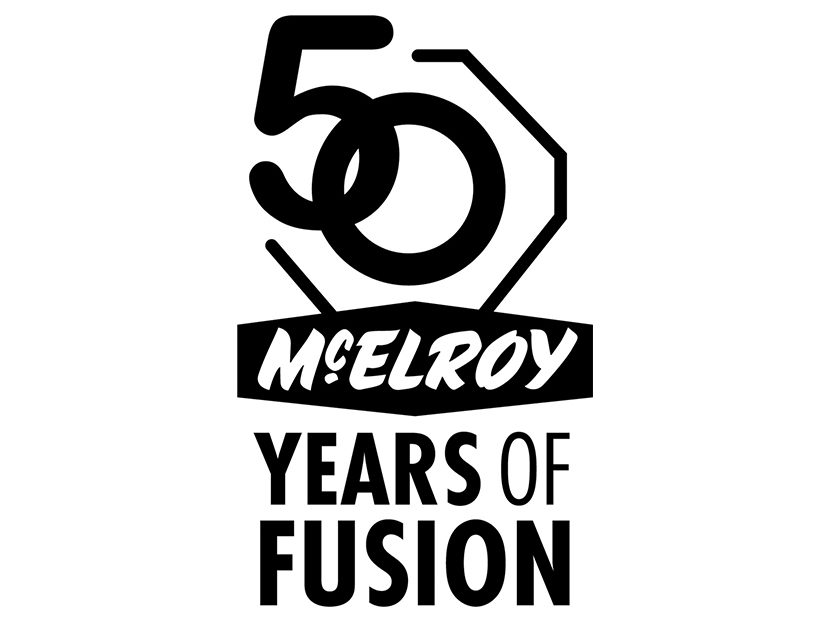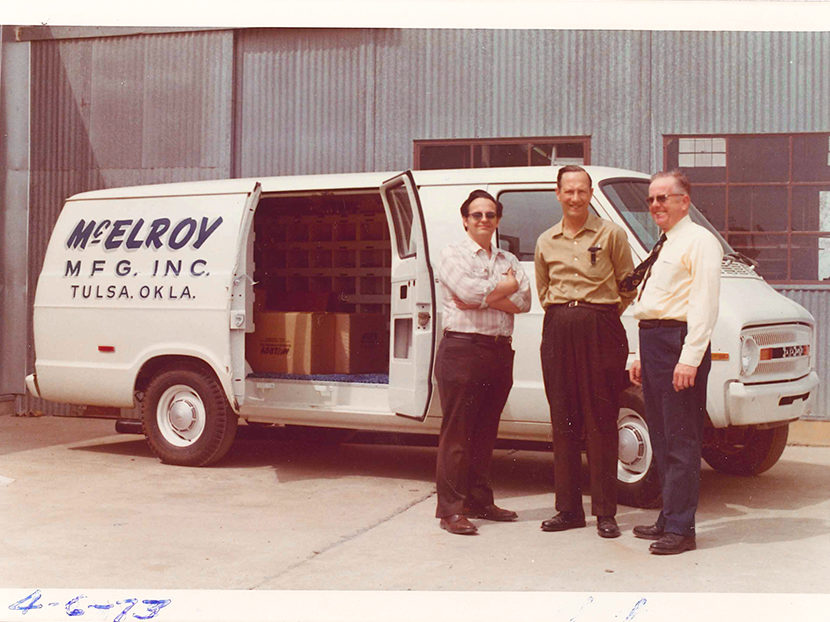McElroy Celebrates 50 Years of Fusion
















McElroy, a 65-year-old company with small beginnings as a contract job shop, has announced its 50th year as a leading manufacturer of thermoplastic pipe fusion machines used worldwide.
“If you look at the industries that have already embraced this technology, they believe in it,” said Chip McElroy, president of McElroy. “Those people are already believers and are challenging us to make our equipment more efficient, even easier to operate and to create the tools that let pipeline owners know joints were done per specification.”
Fusion is Born
McElroy found its niche in the thermoplastics world in 1969 when Phillips DriscoPipe asked the company founder Art McElroy to design a 2-inch prototype machine for its high-density polyethylene (PE) pipe product. This led to the 4-inch Hand Pump and more sizes developed rapidly after that along with stationary and wheeled models and eventually tracked vehicles.
Art McElroy accurately predicted a sustainable future in fusion and adopted a philosophy to stay ahead of the game by investing in engineering and product development. Its equipment was relied on heavily in the construction of natural gas distribution systems and today thermoplastics are gaining ground in nearly every industry, as heat-fused, leak-free joints are accepted as a reliable piping solution.
From Direct Sales to Distributors
McElroy sold direct initially. Its sales team gave demos, trained customers, rented machines, sold parts, made repairs and logged a lot of miles. In 1981, Art McElroy created McElroy University, a formal training facility to ensure that operators and inspectors develop best fusion practices. The company also moved towards a distribution network in 1984 to sell equipment on a broader scale.
The Signature Line
In the 90s, McElroy was encouraged by the mining industry to create a self-propelled fusion machine. The prototype was a self-contained, track-mounted 500mm fusion machine. Today that line of equipment is known in the industry as the TracStar, and has become the flagship of McElroy’s machine lines.
The TracStar is now available in a full range of sizes from 28-inch up to 48-inch OD. Users benefit from its mobility and hydraulic assistance on key functions which requires less manpower and makes it more productive.
“I think what they really have delivered is they have made our one machine/one operator concept of butt fusion more affective,” said Chip McElroy.
Turning Fusion Upside Down
Sparked by the increasing use of pipe up to 2000mm, McElroy set out on a completely new design to meet the challenge. The Talon 2000 is a self-propelled machine with a jaw design that self-loads pipe from the ground, positions it to be fused and moves from joint to joint down the pipeline. The new method for handling pipe known as pipelining provides a safer, more efficient way to fuse large pipe.
In the Building with Polypropylene
After spending the majority of time in outdoor, underground construction, McElroy took its products inside the building in 2014 with equipment to fuse polypropylene pipe for plumbing and mechanical systems. McElroy would blaze new trails for indoor fusion solutions in overhead and tight spaces. By 2018, the company offered socket tools as small as 16mm and butt fusion machines up to 630mm for polypropylene pipe. With record-breaking sales in 2018, McElroy believes its polypropylene tools are a key part of the future.
More information about McElroy's history can be found on the company's website.




